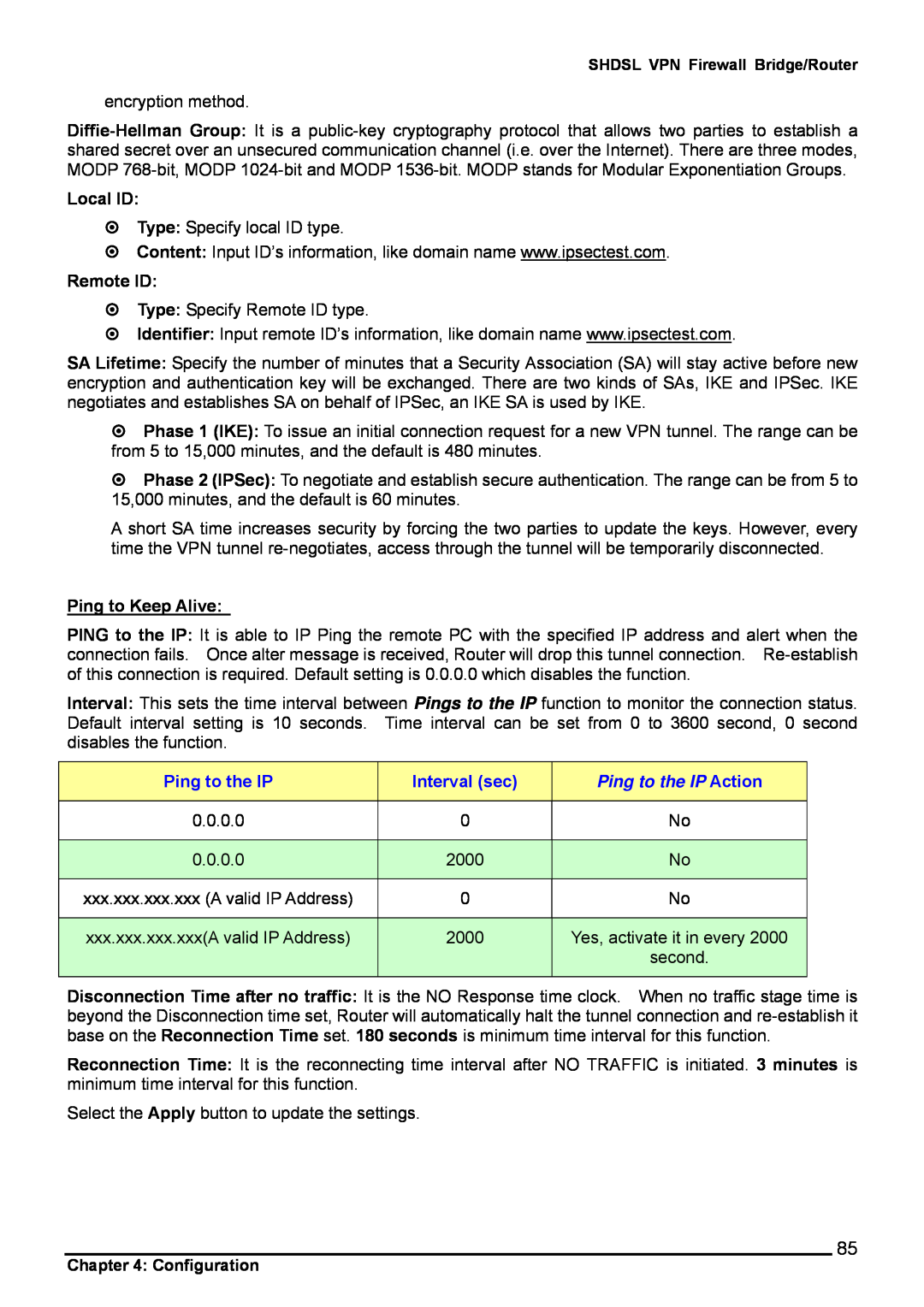SHDSL VPN Firewall Bridge/Router
encryption method.
Local ID:
Type: Specify local ID type.
Content: Input ID’s information, like domain name www.ipsectest.com.
Remote ID:
Type: Specify Remote ID type.
Identifier: Input remote ID’s information, like domain name www.ipsectest.com.
SA Lifetime: Specify the number of minutes that a Security Association (SA) will stay active before new encryption and authentication key will be exchanged. There are two kinds of SAs, IKE and IPSec. IKE negotiates and establishes SA on behalf of IPSec, an IKE SA is used by IKE.
Phase 1 (IKE): To issue an initial connection request for a new VPN tunnel. The range can be from 5 to 15,000 minutes, and the default is 480 minutes.
Phase 2 (IPSec): To negotiate and establish secure authentication. The range can be from 5 to 15,000 minutes, and the default is 60 minutes.
A short SA time increases security by forcing the two parties to update the keys. However, every time the VPN tunnel
Ping to Keep Alive:
PING to the IP: It is able to IP Ping the remote PC with the specified IP address and alert when the connection fails. Once alter message is received, Router will drop this tunnel connection.
Interval: This sets the time interval between Pings to the IP function to monitor the connection status. Default interval setting is 10 seconds. Time interval can be set from 0 to 3600 second, 0 second disables the function.
Ping to the IP | Interval (sec) | Ping to the IP Action |
|
|
|
0.0.0.0 | 0 | No |
|
|
|
0.0.0.0 | 2000 | No |
|
|
|
xxx.xxx.xxx.xxx (A valid IP Address) | 0 | No |
|
|
|
xxx.xxx.xxx.xxx(A valid IP Address) | 2000 | Yes, activate it in every 2000 |
|
| second. |
|
|
|
Disconnection Time after no traffic: It is the NO Response time clock. When no traffic stage time is beyond the Disconnection time set, Router will automatically halt the tunnel connection and
Reconnection Time: It is the reconnecting time interval after NO TRAFFIC is initiated. 3 minutes is minimum time interval for this function.
Select the Apply button to update the settings.
85
Chapter 4: Configuration
